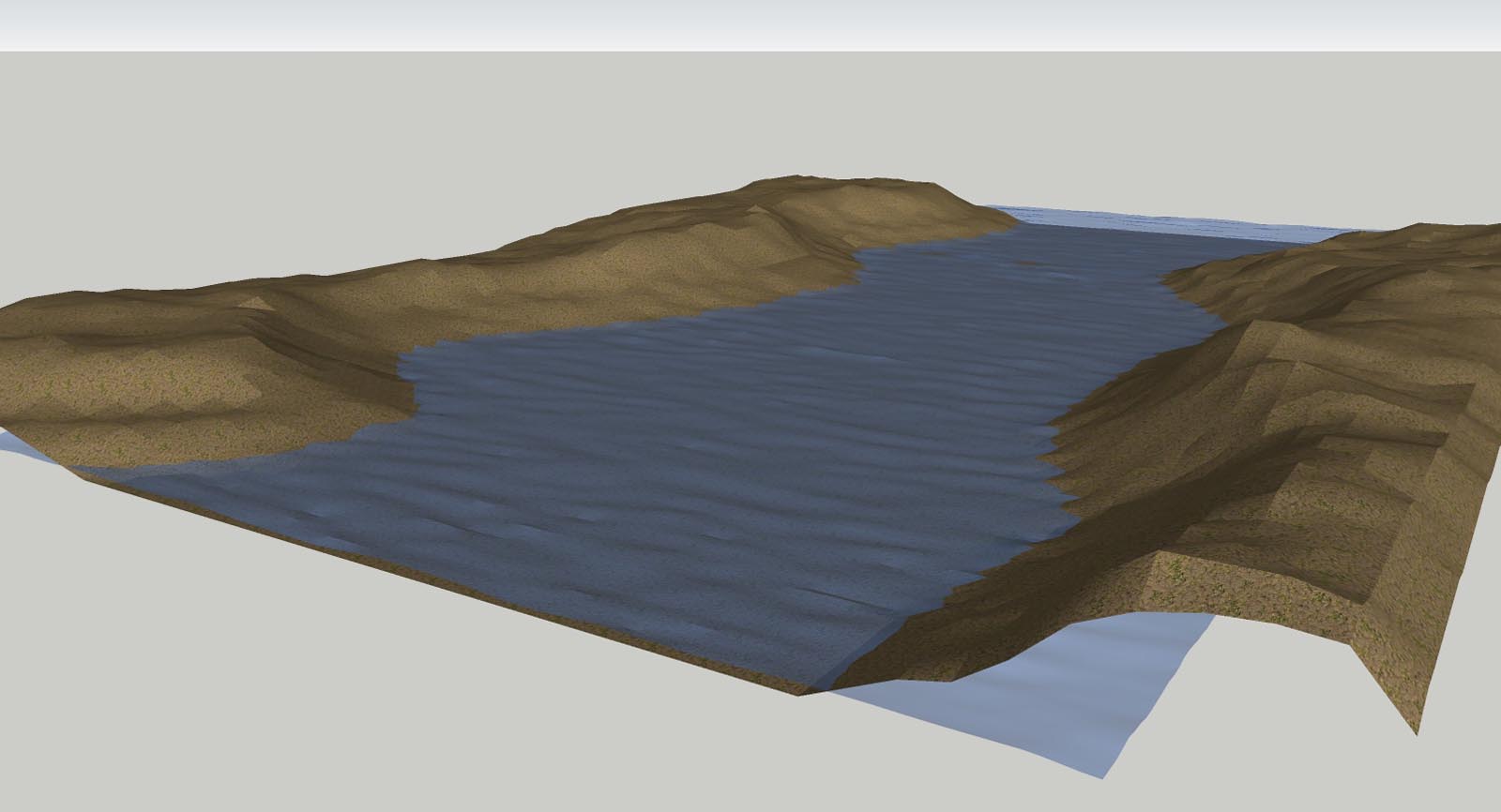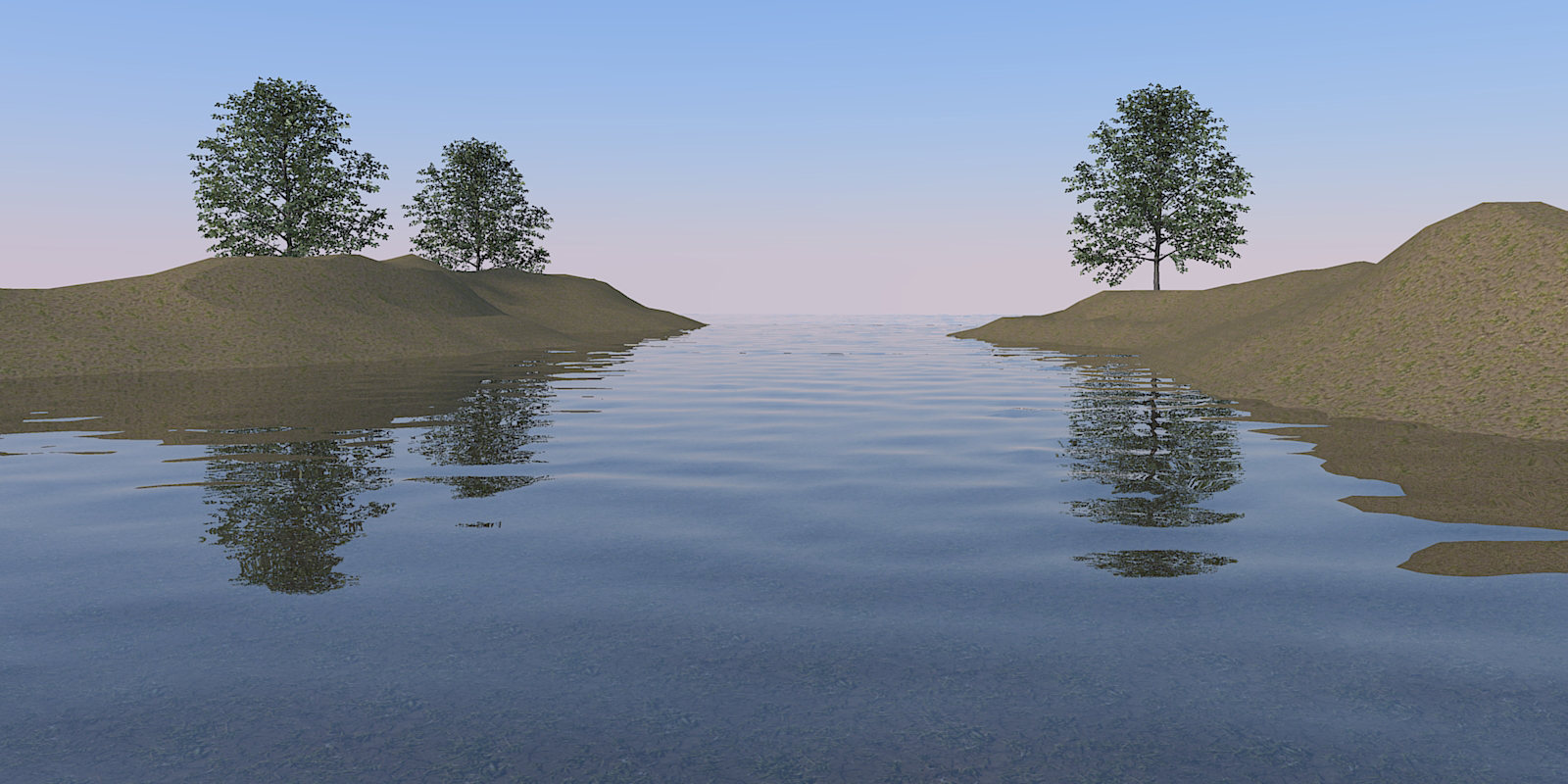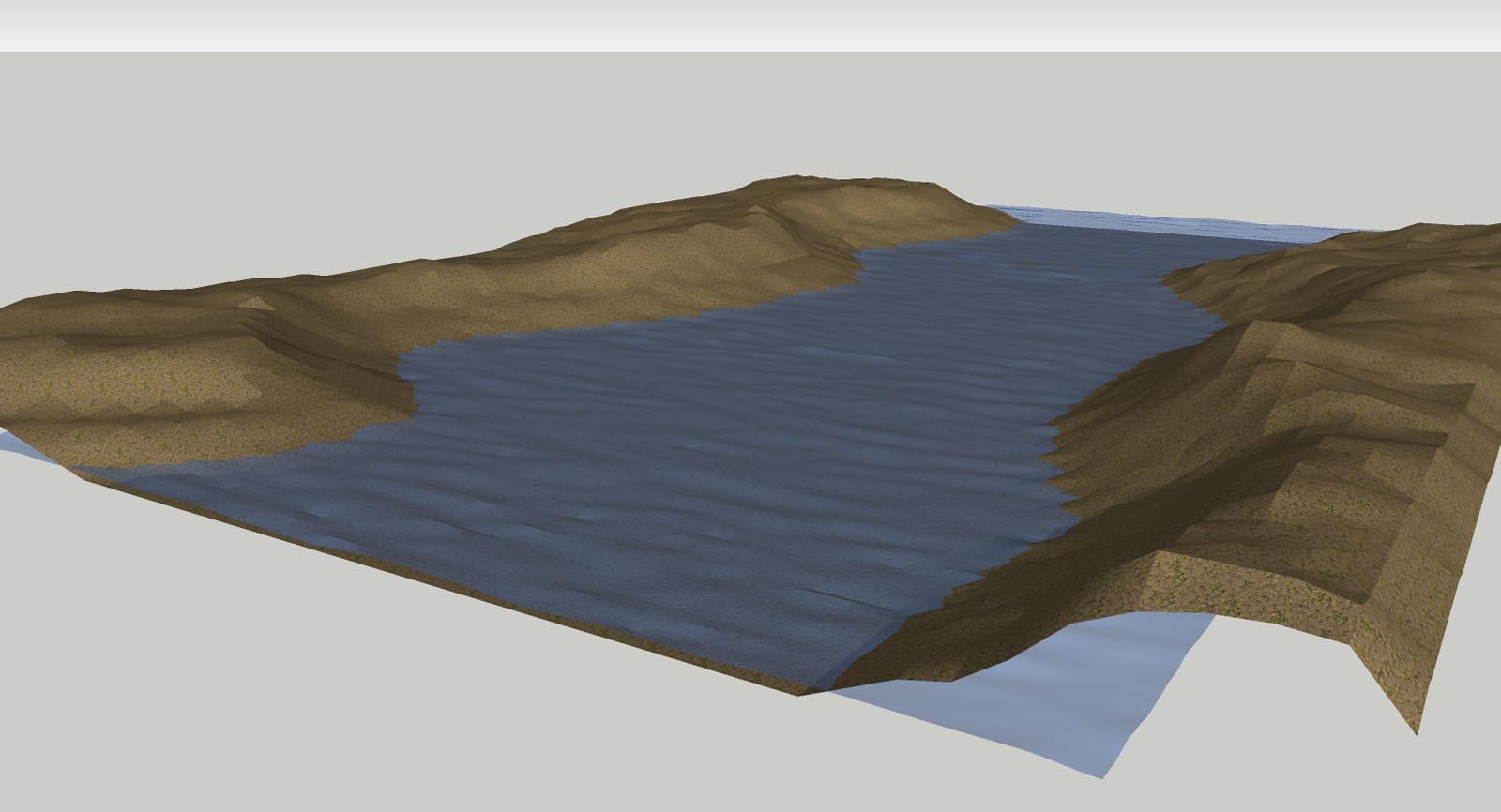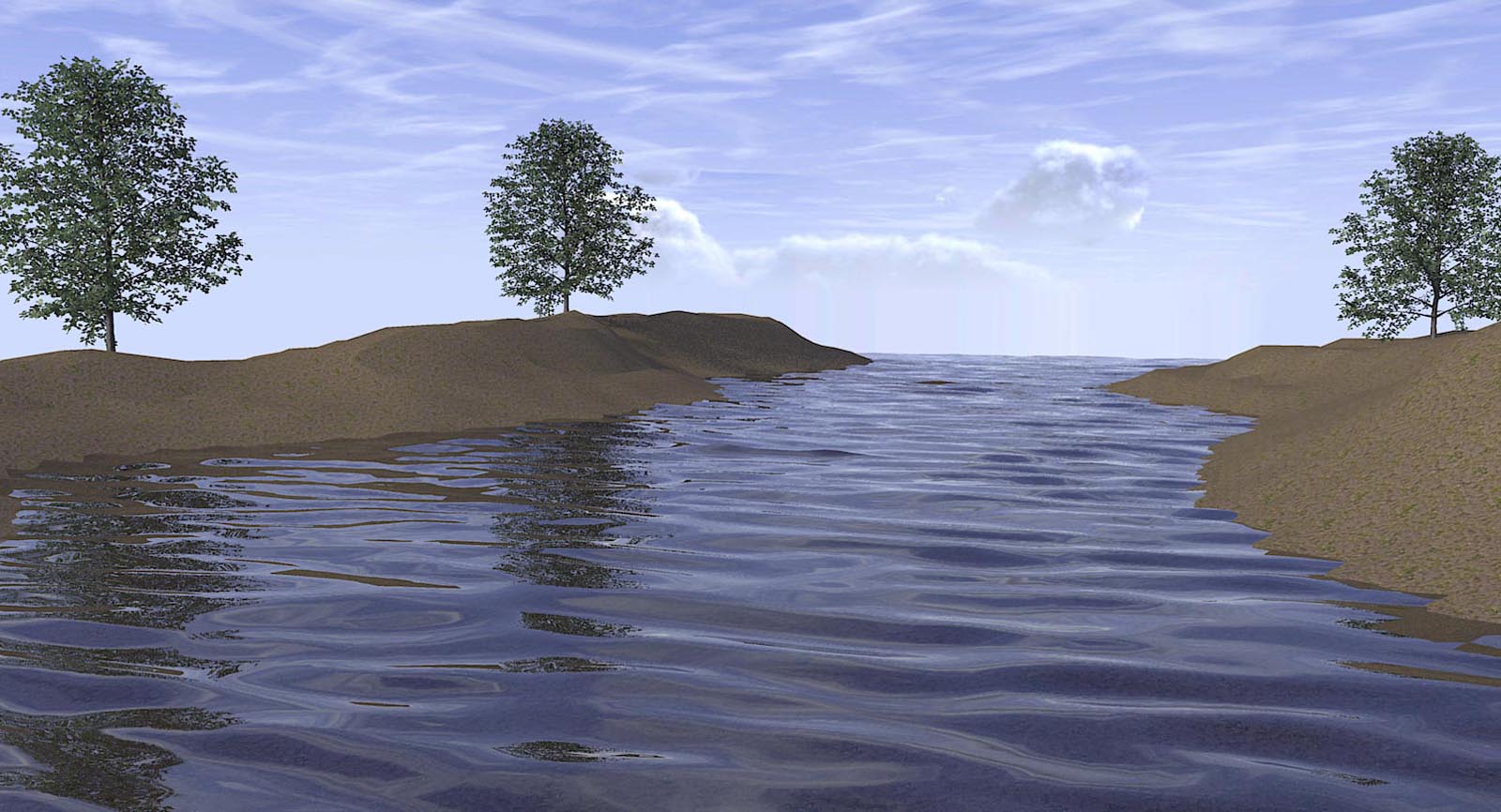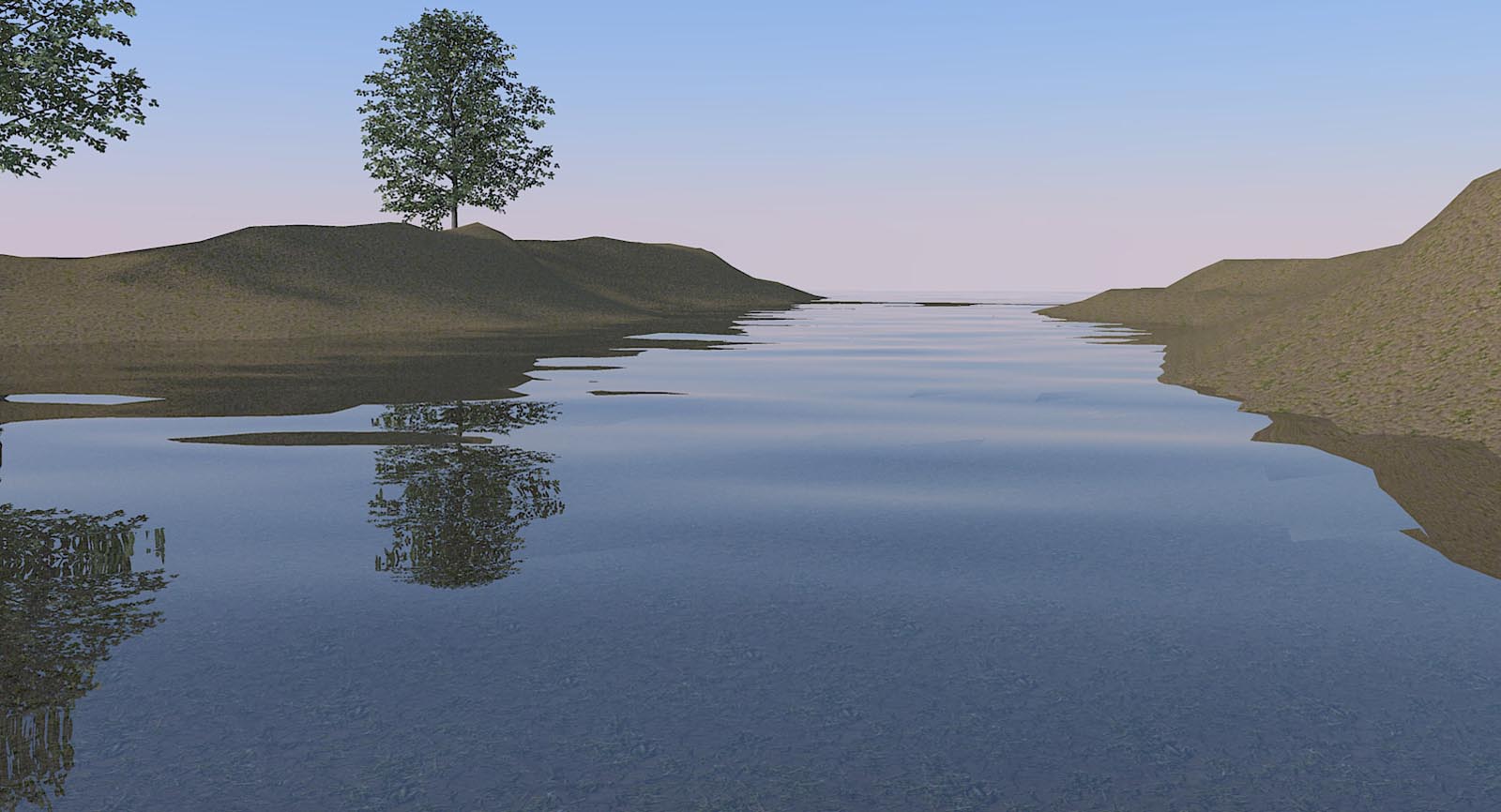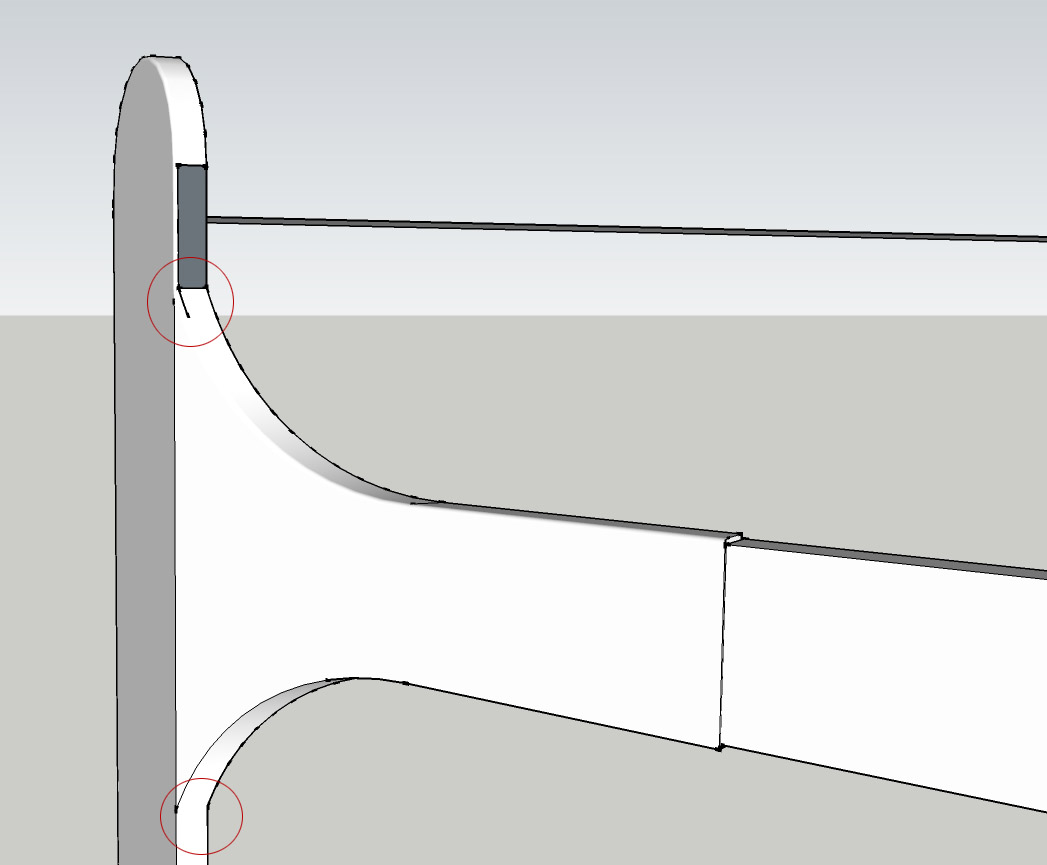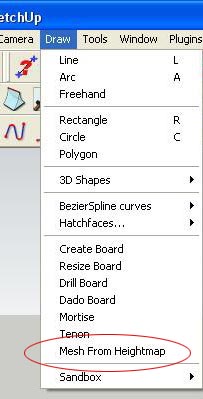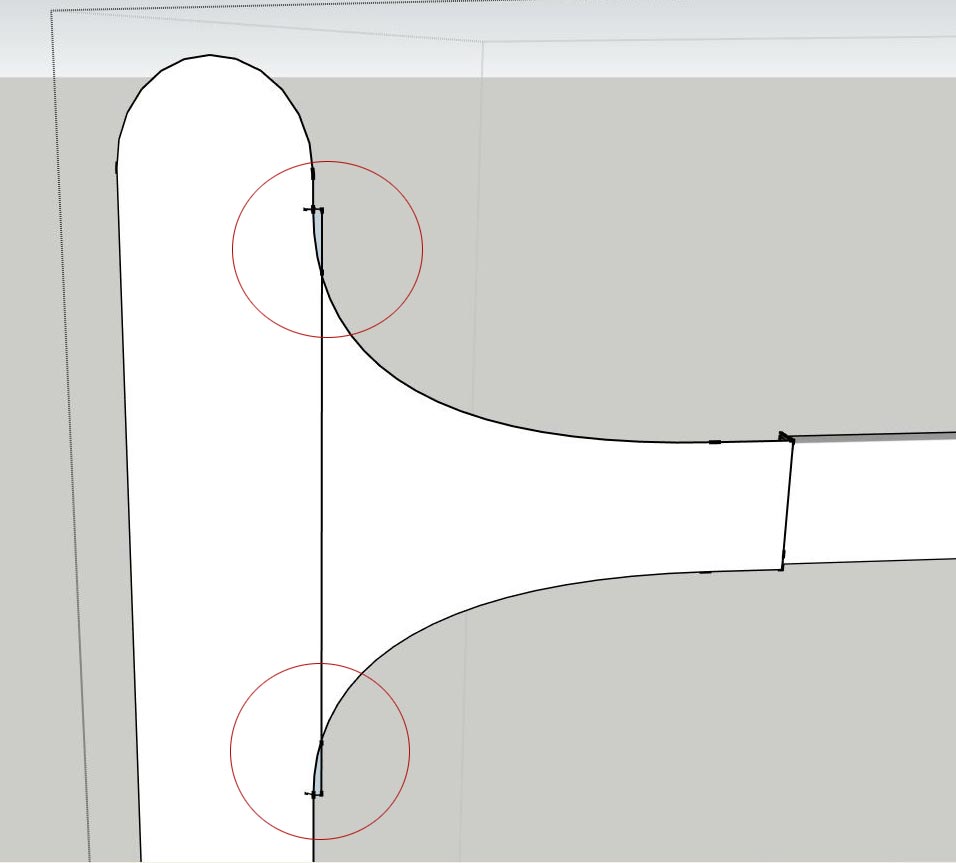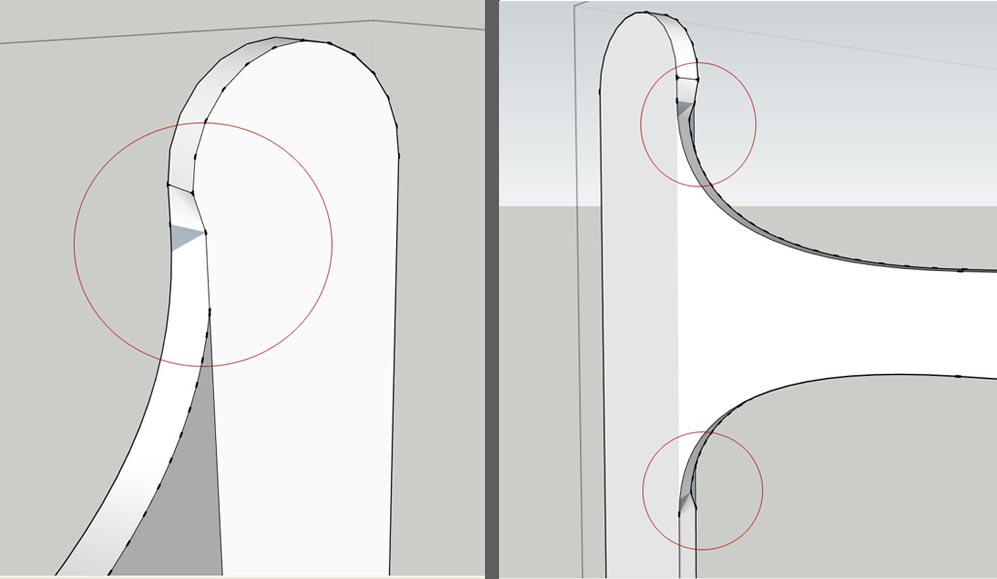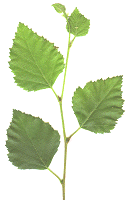Thanks for your replies! The only drawback with this method is that you lose detail from the bmp image as you smooth the geometry. With bigger waves the mesh tends to create jagged peeks so smoothing is necessary unless a higher resolution bmp is used which greatly increases triangle count. I'm still liking the results I'm getting so far.
@notareal: Yeah, read about that. Saw some work arounds but never tried yet. I did some tests in Kerkythea by using photon map caustics and I see a difference. The water looks more realistic and I do see some subtle shadow effects on the river bed during the irradiance calculation. This is probably because the surface is a mesh displaced and not simply a flat surface with a bump map applied. But with calm water in a swimming pool I get what you're saying.
@Gaieus: That looks really cool.
I found some water textures from http://texturelib.com/#!/category/?path=/Textures/water/water
Here are 2 more renders using a texture from above site.
This is a semi-calm one with a bitmap at 100x75 pixels
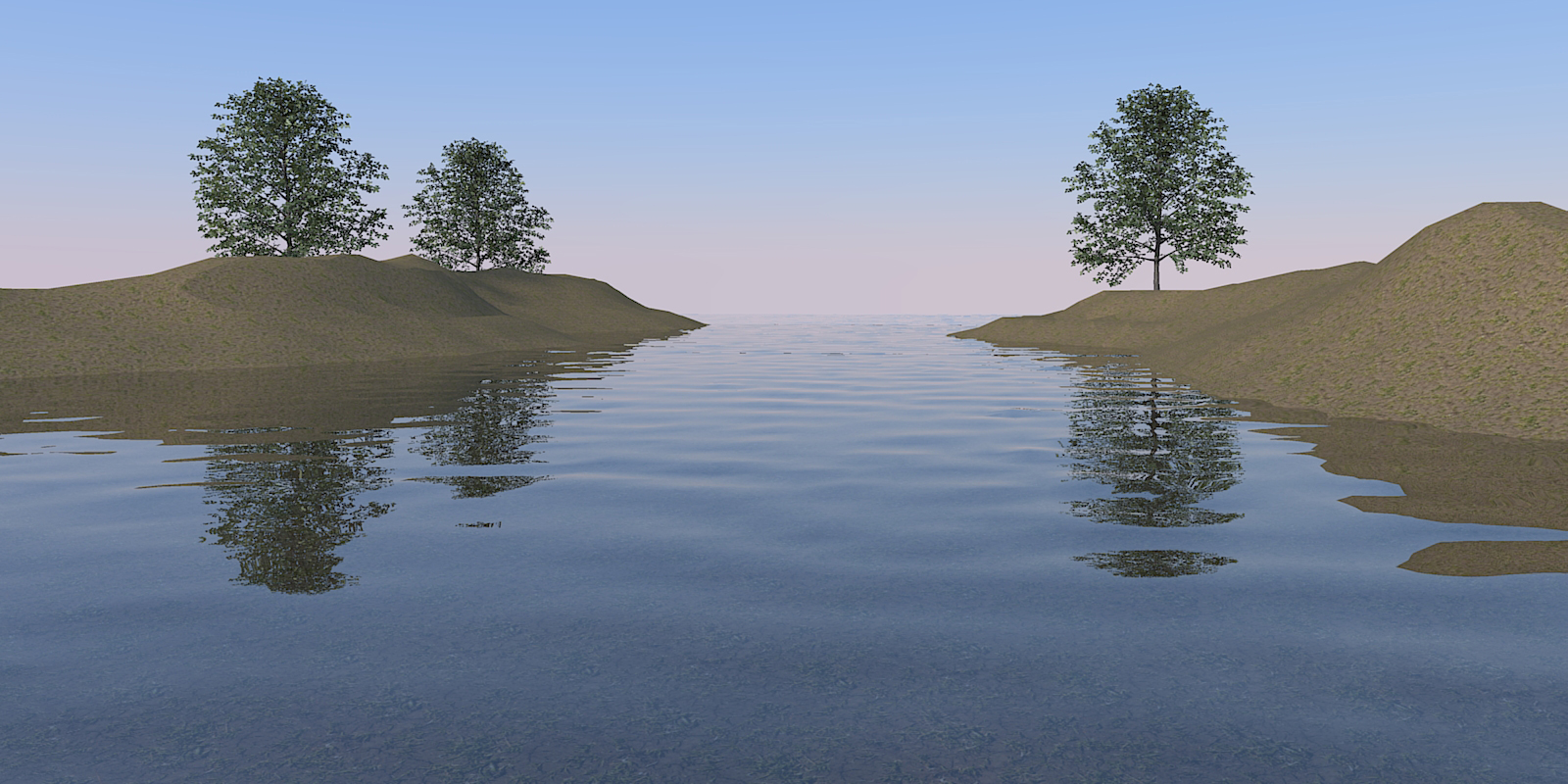
This one is more turbulent with photon map caustics and I raised bitmap resolution up to 150x113 pixels.
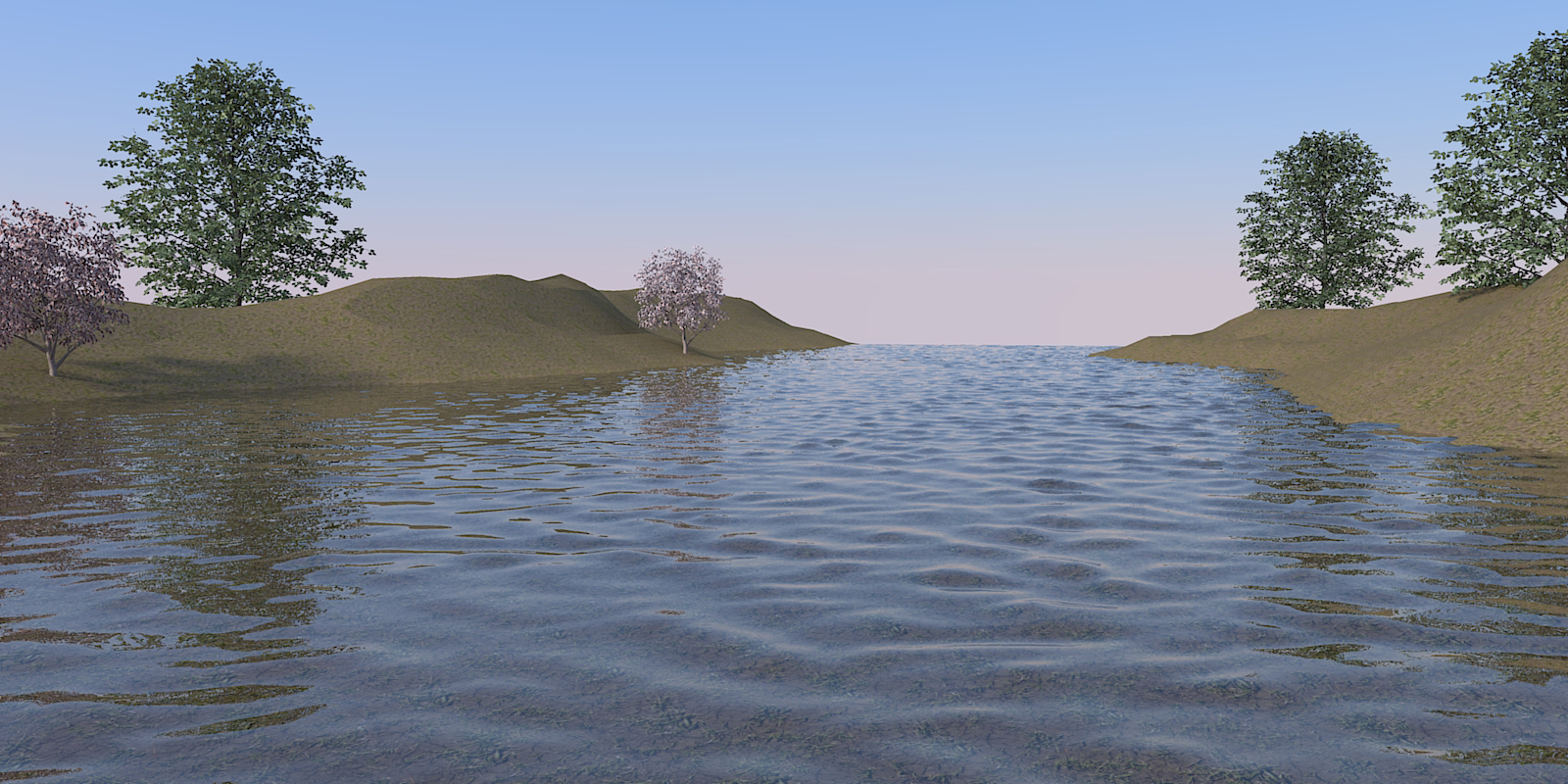
I forgot to mention that during the Bitmap2mesh operation, the height of the waves also depend on the height set on the blue axis. A shallower height would make calmer water. The calmer image in this post was set lower than the second more turbulent one. I forgot the heights but will get into the habit of making notes.
Using images from real waves looks a lot more convincing. I tweaked them in PS before applying. To solve the small detail problem (the smaller ripples on the bigger waves) I am trying to apply a bump map texture to the glass in Kerkythea but for some reason the bump from the image is not showing up. I applied a bump map to a flat plane and it showed just fine. It's a head scratcher. To be continued....
